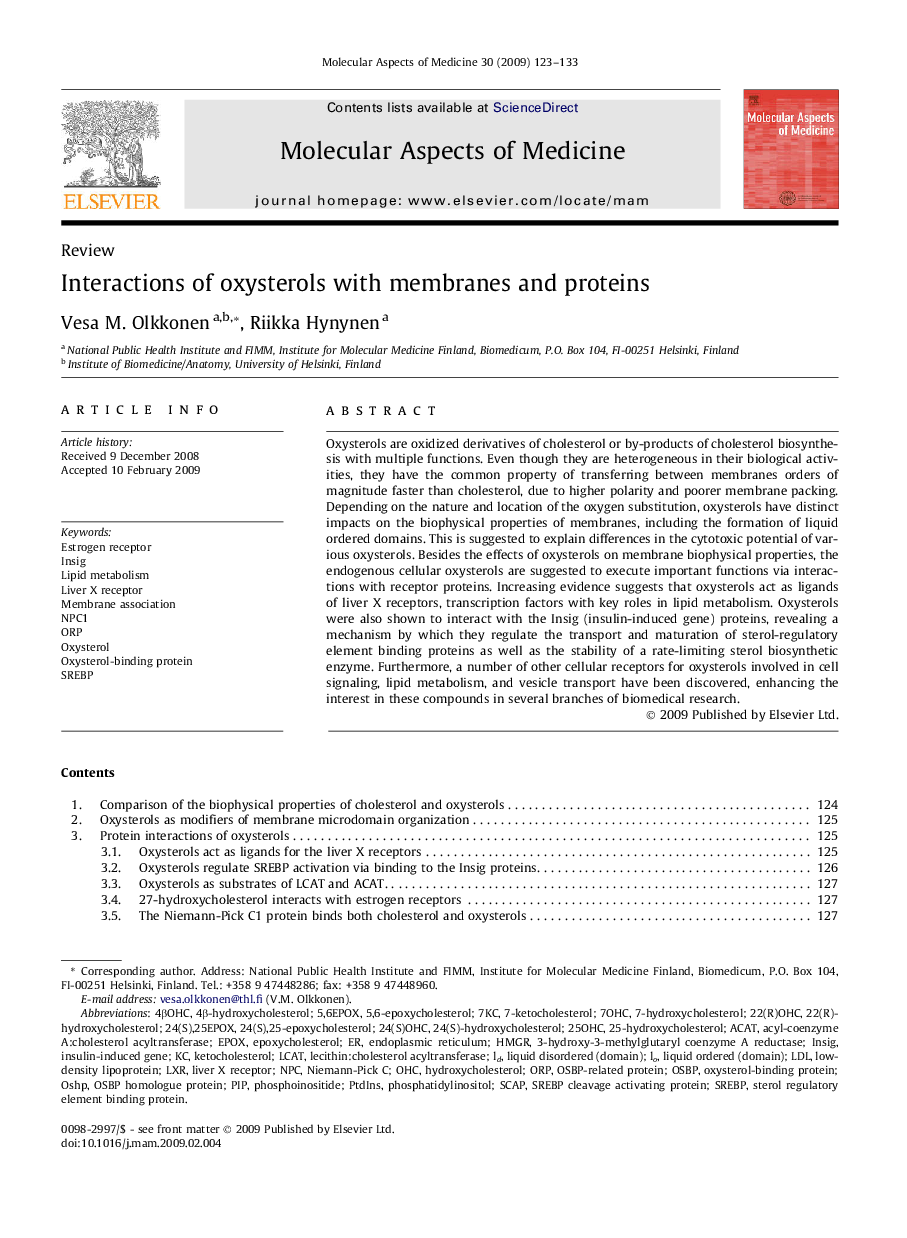| Article ID | Journal | Published Year | Pages | File Type |
|---|---|---|---|---|
| 1995914 | Molecular Aspects of Medicine | 2009 | 11 Pages |
Oxysterols are oxidized derivatives of cholesterol or by-products of cholesterol biosynthesis with multiple functions. Even though they are heterogeneous in their biological activities, they have the common property of transferring between membranes orders of magnitude faster than cholesterol, due to higher polarity and poorer membrane packing. Depending on the nature and location of the oxygen substitution, oxysterols have distinct impacts on the biophysical properties of membranes, including the formation of liquid ordered domains. This is suggested to explain differences in the cytotoxic potential of various oxysterols. Besides the effects of oxysterols on membrane biophysical properties, the endogenous cellular oxysterols are suggested to execute important functions via interactions with receptor proteins. Increasing evidence suggests that oxysterols act as ligands of liver X receptors, transcription factors with key roles in lipid metabolism. Oxysterols were also shown to interact with the Insig (insulin-induced gene) proteins, revealing a mechanism by which they regulate the transport and maturation of sterol-regulatory element binding proteins as well as the stability of a rate-limiting sterol biosynthetic enzyme. Furthermore, a number of other cellular receptors for oxysterols involved in cell signaling, lipid metabolism, and vesicle transport have been discovered, enhancing the interest in these compounds in several branches of biomedical research.
